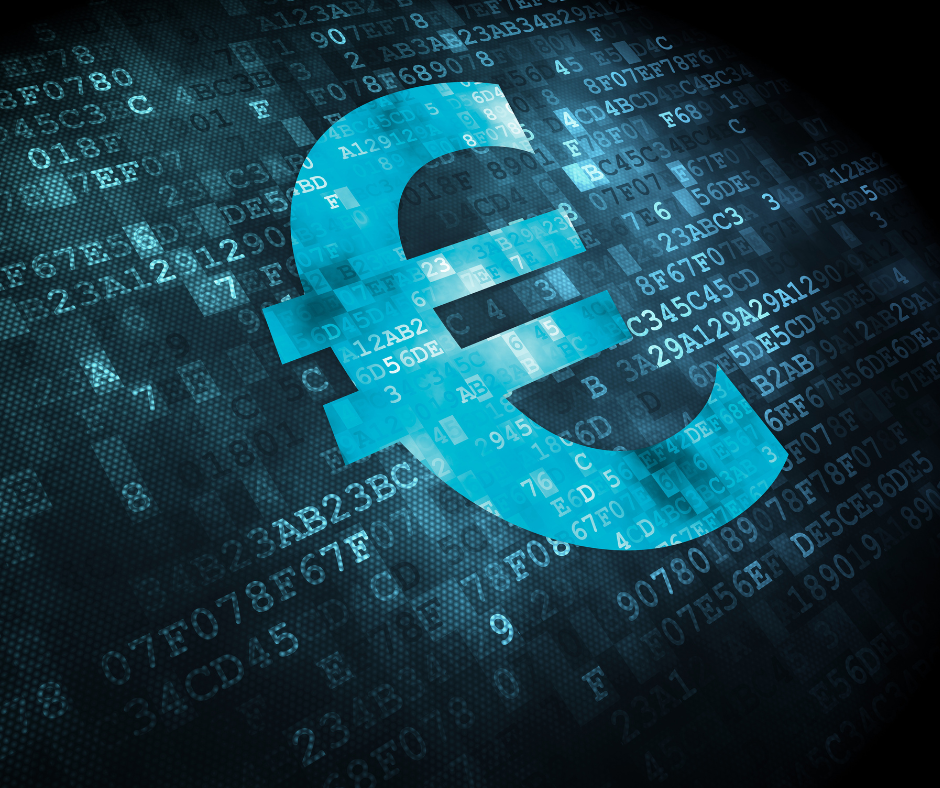Imagine a world where every euro spent leaves an indelible mark. Where your wallet becomes transparent. Where the European Central Bank (ECB) could, in theory, know about your morning coffee, your Netflix subscription, and your last-minute purchases.
Science fiction? No. This is the digital euro project, and it's advancing faster than you might think.

For several years, the ECB has been actively preparing the introduction of a digital euro, and although no official launch date has been set, it could be deployed as early as 2028. Officially presented as a simple digital equivalent to cash, this instrument is increasingly raising concerns among legal experts, economists, and citizens alike. Beneath the technological modernity lies a profound—and potentially problematic—transformation of our relationship to money, privacy, and the State.
What exactly is the digital euro?
The digital euro would be a currency issued directly by the ECB, available to the public in electronic form. Unlike current bank deposits (commercial money), it would represent a direct claim on the central bank—similar to cash.

Technically, it could be used via a mobile app or a card, allowing for instant payments, even offline. Officially, it aims to:
- complement, not replace, cash;
- ensure European monetary sovereignty against cryptocurrencies and fintech;
- offer a public, transparent, and accessible payment method.
But behind these seemingly noble goals, the legal and societal implications are far from neutral.
Anonymity, the first collateral victim
Cash is the king of anonymity. A 20-euro note tells no story—it doesn't reveal who held it before you or what you'll use it for. This fundamental feature of cash, a guardian of our freedoms for centuries, is precisely what the digital euro could never truly offer.
In fact, introducing a digital euro would place the ECB—and potentially EU member states—at the heart of every transaction. Unlike cash, the digital euro would allow for nearly absolute traceability of payments, potentially turning it into a tool for mass financial surveillance.
In response to criticism, the ECB promises a “high level of confidentiality,” but simultaneously admits that EU anti-money laundering and anti-terrorism financing obligations require traceability. In other words: anonymity is stillborn. Even with the best intentions and the most advanced technologies, a fully anonymous digital euro would directly conflict with the European regulatory framework.
The Chinese example should give us pause. The digital yuan already allows for tracking every transaction. Some municipalities have experimented with expiration dates on the currency to boost consumption. Social benefits paid in digital yuan have been programmed to be usable only at certain stores or for specific products. Europe assures us it won’t follow this path—but technically, nothing prevents it.
The GDPR paradox and total traceability
The General Data Protection Regulation (GDPR), Europe’s pride in privacy protection, faces its biggest challenge here.
.png)
How can we reconcile the data minimization principle in Article 5 of the GDPR with a system that, by design, could record everything? How can we guarantee the right to erasure when every transaction must be preserved for compliance reasons?
Without solid guarantees, the digital euro could create the largest behavioural database ever assembled in Europe. Every purchase, every transfer, every consumption pattern could be analysed—producing an unprecedentedly precise financial profile for every European citizen.
Concerns over technical possibilities and traditional banks
The programmability of the digital euro raises even more troubling questions.
Technically, a digital euro could expire after a certain date, be limited to certain types of purchases, be geo-restricted in its use, or be automatically deducted in the event of tax debt.

For example, imagine digital “vouchers” distributed during a crisis, usable only for local food purchases, or digital family benefits that can’t be spent on alcohol or tobacco. Public health measure or disguised social control? The line is thin.
Economically, the digital euro poses an existential threat to the traditional banking system. In a confidence crisis, massive, instantaneous transfers of deposits to the ECB would become technically trivial. No need to queue at ATMs—just a few clicks could trigger a “bank run” of unprecedented speed and scale.
The ECB proposes capping digital euro holdings—figures between EUR 3,000 and 4,000 per person are mentioned. But this raises a fundamental constitutional question: can ownership rights over one's own money be limited? And if the cap is set at 3,000 euros, what prevents it from being lowered to 1,000, 500, or adjusted based on social, economic, or behavioural criteria?

Traditional banks—already weakened by competition from fintech and cryptocurrencies—could see their role as financial intermediaries drastically diminished. If citizens can hold their assets directly with the ECB, why go through a bank? Credit—the engine of the economy—could suffer dramatically.
A blockchain-based technology?
Contrary to popular belief, the digital euro is not a cryptocurrency. It is not based on a public decentralized network or an open blockchain. The ECB does not rule out using distributed ledger technologies (DLT), but prefers a centralized architecture or, at most, a private and permissioned blockchain.

In such a case, only approved entities (like banks or payment service providers) could validate transactions. The goal is not to ensure anonymity or eliminate intermediaries (as with classic cryptocurrencies), but to ensure traceability, regulation, and stability.
In other words, even if a “blockchain” is used, it would not guarantee decentralization, censorship resistance, or the protection of freedoms typically associated with crypto assets. It would be a partial technological veneer without the philosophical guarantees.
The contrast with the United States is striking. Across the Atlantic, the Federal Reserve is not moving toward issuing an official digital dollar but is instead gradually regulating and supporting the rise of dollar-backed cryptocurrencies (“stablecoins”) like USDC or USDT, issued by private actors.
These stablecoins already circulate massively on public blockchains and serve as means of payment, financing tools, and hedging instruments in the Web3 ecosystem. They are not without risks (especially regarding reserve guarantees), but they benefit from organic adoption, global interoperability, and an unmatched level of transparency.
The European Union, by choosing a publicly controlled currency issued by the ECB, is opting for a more institutional—but more intrusive—path, where the U.S. favours a more liberal public/private hybrid model with existing functional decentralization.
Conclusion: Time to Choose
The digital euro is not just a technical or economic issue. It is a societal debate that will define the contours of our freedom in the 21st century. Between efficiency and surveillance, between modernity and liberty, between centralization and autonomy—the choices we make today (or allow to be made) will shape the monetary face of Europe tomorrow.
Money is not neutral. It is political, legal, social. It touches the very essence of our social life. That’s why this debate must not remain confined to expert circles. It must be brought to the public square, debated in parliaments, and understood by citizens.
.png)
There is still time to act, to question, to demand safeguards. But this window of opportunity is closing fast. By 2028—the year mentioned for the digital euro’s launch—decisions will have been made. Technical specifications will be locked in. Political choices will be finalized. And we will have to live with the consequences, good or bad, of what we have—or haven’t—defended today.
Vanbelle Law Boutique supports businesses and individuals in understanding and anticipating upcoming legal and monetary challenges. Our expertise in financial law, banking law, and cryptocurrencies enables us to provide all types of strategic advice tailored to major future transformations.





.png)




